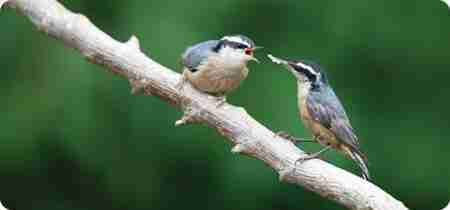Join us on a fascinating journey as we traverse across various continents, from bustling metropolises to tranquil meadows, inspecting the intriguing habitats where sparrows make their homes. This article navigates a detailed exploration of landscapes and environments that these feathered friends colonize, underlining the adaptability of sparrows – a common bird with an uncommon ability to thrive in diverse settings worldwide. So, sit back, relax and prepare to expand your knowledge about the sparrow habitats scattered across our beautiful planet.
Understanding Sparrow Species
In our shared fascination with the natural world, we often find ourselves drawn to the humble sparrow. Sparrows, small and often inconspicuous birds, belong to the family Passeridae and are found all over the world. We find their diversity and adaptability absolutely fascinating, making them a perfect topic for exploration.
Defining Sparrow Characteristics
Identifying sparrows can be an incredible adventure for us. Sparrows are typically small, plump, brown-grey birds with short tails and short, powerful beaks. Despite their unassuming appearance, they possess a diverse range of songs and behaviors. Though seemingly common, understanding these nuances is key to appreciating these lovely creatures.
Differentiating Sparrow Species
It’s quite intriguing that a multitude of sparrow species co-exist around the world. Sparrow types range from the common House Sparrow, native to Europe and Asia, to the American Tree Sparrow, found across North America. Each species boasts unique features, such as different plumage colors, sizes, or call sounds, helping us to distinguish one from the other.
Distribution of Sparrow Species
The global distribution of sparrows is something we find truly remarkable. Sparrows inhabit every continent except Antarctica, from urban cityscapes to wild forests and beyond. This distribution testifies their adaptability and resilience in a variety of environments.
Urban Sparrow Habitats
Our cities have become home to several species of sparrows. Their ability to occupy and thrive in these bustling environments never ceases to amaze us.
Sparrows in Metropolitan Cities
In the heart of bustling metropolitan areas around the world, we find sparrows have made their homes. They are often seen perched on power lines, hopping around busy cafes, or nesting in crevices in buildings. Despite the urban hustle and bustle, they have managed to carve out a niche for themselves.
Adaptation to Urban Landscapes
We marvel at the sparrows’ incredible adaptability to urban landscapes. They’ve learnt to live with humans, and find ample food in our leftover crumbs or scattered seeds. Their nesting patterns have also evolved, with nests commonly found in building crevices, signboards, and even traffic lights.
Threats Facing Urban Sparrows
Unfortunately, urbanized habitats pose numerous threats to these tiny birds. From air pollution to loss of breeding spaces due to rapid urbanization, the challenges are substantial. We also acknowledge the indirect threats such as predators including cats and dogs.

Rural Sparrow Habitats
Moving from the cities, we enter the rural countryside, where sparrows are equally at home.
Sparrows in Farmlands and Villages
In tranquil farmlands and villages, sparrows find a bounty of food and nesting sites. From open fields of grains to fruit-bearing trees, these environments provide the perfect habitats for sparrows.
Adaptations to Rural Environments
We recognize the ingenious adaptations sparrows have made to these rural environments. Their diet includes a variety of seeds, grains, and insects found on farmlands, and their nests often find shelter in barns or under the eaves of houses.
Challenges for Rural Sparrows
Even in these seemingly idyllic settings, sparrows face numerous challenges. The use of pesticides on crops, loss of traditional nesting sites, and predation are serious threats for sparrows in rural environments.
Sparrow Habitats in Forests
From the open fields, we delve into the dense forests where many sparrows also reside.
Forest Types and Sparrow Distribution
Across the global array of forest types, right from the evergreen conifers to lush tropical rainforests, we find different sparrow species. For example, one might spot a Fox Sparrow beneath a canopy of coniferous trees in the cooler climes, while the endemic Rufous-winged Sparrow of the Sonoran Desert can be found in deciduous forests.
Adaptations to Forest Habitats
Living in forests requires a specific set of adaptations, and sparrows are no exception. From blending their plumage with the forest floor to evolving specific call patterns, sparrows have beautifully adapted to these green sanctuaries.
Threats to Sparrows in Forests
Alas, these forest refuges are not devoid of threats. Deforestation and forest degradation pose massive risks to the forest-dwelling sparrows. Invasion of alien species and predators accentuates the threat to their existence.

Sparrow Habitats in Deserts
As we trace the sparrow habitats across various landscapes, we find that even the harshest of deserts host these resilient creatures.
Sparrows in Arid Zones
The arid zones, characterized by high temperatures and extreme water scarcity, unexpectantly teem with life including sparrows. In the United States, for example, the Desert Sparrow is quite a common sight.
Survival Strategies in Desert Conditions
We have always admired the hardiness of desert-dwelling sparrows. They have adapted to conserve water and stay cool in the intense heat. From nesting in cooler underground burrows to having a diet that extracts water from their food, their survival strategies are truly fascinating.
Impact of Climate Change on Desert Sparrows
Sadly, climate change threatens the existence of desert sparrows. Rising temperatures exacerbate water scarcity and food shortages, making everyday survival considerably more challenging.
Sparrow Habitats in Mountainous Regions
Mountainous terrains form another distinctive habitat, where some species of sparrows have managed to eke out a living.
Altitude and Sparrow Distribution
We find that altitude in mountainous regions influences sparrow distribution. Cooler temperatures at high altitudes host sparrows like the Rufous-collared Sparrow found in the Andes Mountain range in South America.
Impact of Cold Climate on Sparrows
Cold climates demand specific adaptive measures – and sparrows do not disappoint us here either. They put on extra fat for insulation, huddle together to share body heat, and find sheltered nesting sites to shield from icy winds.
Mountain Sparrows and Climate Change
Changes in climatic patterns affect mountain habitats, shortening the available food supply window in the frozen regions, endangering the resident sparrow species.
Sparrow Habitats Along Coasts
From high altitude terrains, we finally descend to the coasts, which offer yet another unique habitat for these birds.
Sparrows in Coastal Areas
In coastal areas, sparrows like the Savannah Sparrow and Ipswich Sparrow have become quite established, often seen amidst the dunes or foraging among the tidal wrack.
Adaptations to Saline Environments
Coastal sparrows have adapted to deal with the saline environments and unpredictable tidal patterns. Sparrows feed on insects and vegetation in the intertidal zones, and their nests are often strategically placed to avoid high tides.
Risks for Coastal Sparrows
But coastal development, sea-level rise, and human disturbance pose significant challenges to the sparrows’ coastal existence, disrupting their nesting sites and altering the ecological balance of these zones.



Impact of Human Activity on Sparrow Habitats
As we explore these diverse habitats, we notice a common thread: the impact of human activities on sparrow existence.
Urbanisation and its Effects
Rapid urbanization, with its pollution and disturbance, poses considerable threats to sparrow populations. Traditional nesting sites are lost to skyscrapers, while increased vehicular movement disrupts their routines.
Agriculture and its Consequences
Intensive farming practices and the use of pesticides diminish the quality of rural habitats, reducing food supply and breeding sites.
Consequences of Deforestation on Sparrows
Deforestation, for urban development or agriculture, results in habitat loss and fragmentation. This directly impacts the forest-dwelling sparrow species, pushing them toward extinction.
Strategies for Sparrow Conservation
With the numerous challenges facing sparrows, it’s crucial that we address the question of their conservation.
The Importance of Habitat Conservation
Preserving and restoring habitats is of utmost importance. Creating green spaces in cities, adopting sustainable farming practices, and ensuring forest conservation will systematically address the problem at each habitat level.
Human Influence on Sparrow Populations
As the major influencers of sparrow populations, it’s vital that we adopt responsible behaviors. From not feeding sparrows inappropriately to keeping cats indoors, our actions can significantly influence their survival.
Implementing Sparrow Preservation Efforts
We propose launching dedicated preservation efforts at different administrative levels, like stringent biodiversity laws, sparrow conservation projects, and widespread public awareness campaigns to create more empathy for sparrows.
Future of Sparrows: Predictions and Possibilities
Looking ahead, we contemplate the future of sparrows in the ever-changing global landscape.
Impact of Global Warming on Sparrows
Global warming, with its changing climate patterns and increased extreme weather events, is a severe threat to sparrows, particularly those in desert, mountain and coastal regions. Adaptation to these new conditions will be a considerable challenge for these small birds.
Human Intervention for Sparrow Conservation
If sparrows are to have a fighting chance at survival, human intervention is paramount. Apart from habitat conservation and sustainable practice adoption, specific sparrow conservation initiatives are imperative to safeguard their populations.
The Role of Science in Sparrow Preservation
We posit that scientific research has a crucial role to play in sparrow preservation. Knowledge from detailed population studies, ecological research, and behavior analysis can guide effective conservation strategies. As genetic technologies evolve, they can also be leveraged to aid in the revival of dwindling sparrow populations.
As we journey through diverse landscapes, exploring sparrow habitats, we remain avid admirers of these tiny birds’ resilience and adaptability. As common as sparrows may seem, their survival in our rapidly changing world is anything but given. Let’s join hands in understanding and contributing more to their conservation for it’s rightly said, “we do not inherit the Earth from our ancestors; we borrow it from our children”.


